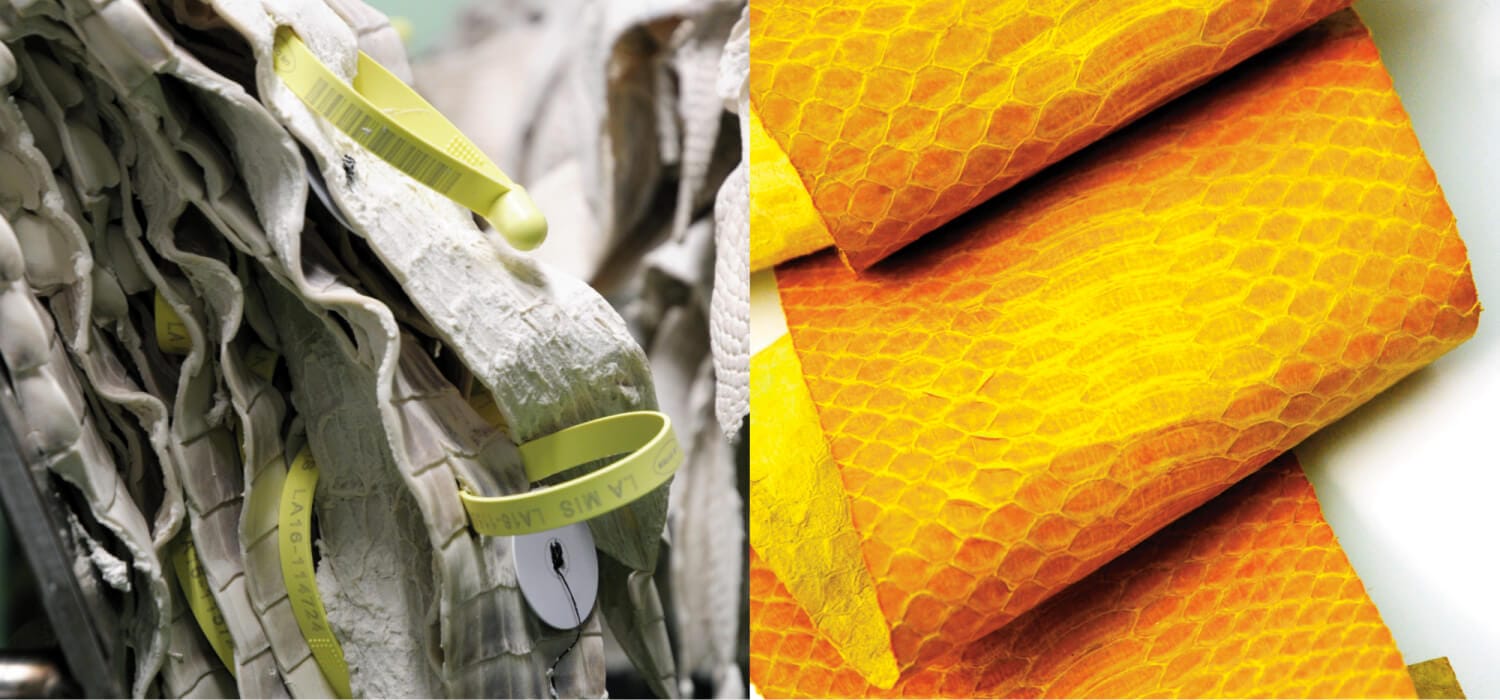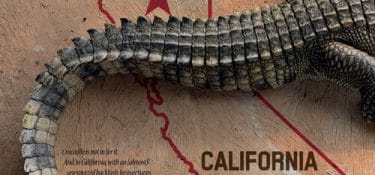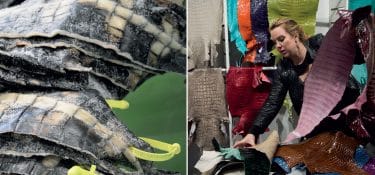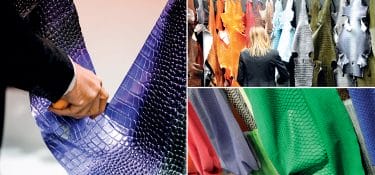There is a need for clarification. Because the list of brands that have abandoned the use of fur is long. So long that, when it comes yet another proclamation of a designer converting to “fur free”, almost no one takes notice. But last fall there was a small landslide. First Diane Von Fürstenberg announced the contextual abandonment of fur and exotic leathers. Then came Chanel. The two brands arrived at the resolution with a different path: the Belgian designer has moved on “ethical” basis in agreement with PETA; Bruno Pavlovsky, president of the French label, makes it a question of solidity of the supply chain. Those in the industry do not take long to see a matter of opportunities. Fulvia Bacchi, director of UNIC – Italian Tanneries, interviewed by Il Foglio on the step by Chanel wonders if it is “the umpteenth marketing move in the face of a segment that does not pay back the group as much as it should?”. Speaking of Pavlovsky’s doubts, Bacchi clarifies: “The supply chain is very controlled in every step, at least here in Italy. Among our members, of whom about twenty are specialized in exotic animals, the checks on the living conditions of the animals are very strict”. We need to clarify, we said. Because a part of the public debate and industry is contracting the primacy of environmental and social sustainability to the detriment of those who produce materials of animal origin. The theories of those who claim to be paladins of nature rest, however, on opaque foundations. While their choices have consequences on the environment and on society.
The renunciation of exotic leathers is it a responsible gesture? It is not, because they are jeopardizing conservation projects and bringing local communities to their knees. “That of Chanel is a lazy choice”: Daniel Natusch of IUCN explains why
by Roberto Procaccini
It is not common to read the contributions of scientists, conservationists in particular, in high fashion magazines. Yet last December 6th Business of Fashion hosted four IUCN researchers (International Union for Conservation of Nature), NGO since 1999 member of the UN General Assembly with Observer status. “It was an operation truth,” explains Daniel Natusch, an Australian researcher, a specialist in boas and pythons and a member of the group that deals with relations between wild animal exploitation and subsistence of local communities for IUCN. A few days ago, the brand of CEO Pavlovsky announced the stop to the use of exotic leathers and the contribution of the IUCN titled authors, in an unequivocal way, “Why Chanel’s Exotic Ban Is wrong”. “As scientists, we dedicate our lives to the learning of truth and its dissemination to the public – continues Natusch -. So we believed it was important for the truth to be exposed. Moreover, we wanted to reassure the public that other brands would not follow Chanel’s decision. If they did, the impact on populations and conservation initiatives would be devastating”.
There is a definition that we have come across many times in the text of the IUCN scientists: that of Chanel is “a lazy choice”. Why? “Many brands deploy great efforts to ensure sustainability and transparency in the value chain of their raw materials, including exotic leathers,” says Natusch -. LVMH, Kering, Hermès and others have been investing for years in a sustainable and ethical supply chain”. One example is the fact that “all the major brands are members of SARCA, the Alliance for the conservation of reptiles from the Far East – continues Natusch -. What About Chanel instead? “A very little effort was made in these years, if any”.
The heart of the intervention on BoF is the close relationship between the (virtuous) use that the fashion industry makes of materials such as exotic leathers and the possibility of funding programs for the conservation of the same exotic animals and their habitat, in favor of local communities. However, part of the public does not seem to have liked the application of the principle of economic utility to environmentalism. “I think it is not ethical for people living in the West, enjoying a privileged life of excesses – cut it short Natusch – to be judicious about the positive sustainability programs going on in other parts of the world. The reality is that the daily actions of Westerners do more harm to animals than killing a few units for leather”. The European or US consumer can not even wash their hands of the fate of those who, in other corners of the globe, on exotic leather bases its economy. “We must give a reason to the populations of the developing countries to take care of wild species and their habitats. The financial incentives offered by the luxury industry provide this reason. So we, as conservationists, are well positioned to help luxury do more and provide more benefits for animals, habitats and local communities.“
If all the designer labels were to follow Chanel’s example, it would be a disaster of planetary proportions. “Longer conservation programs would end in unison – Natusch testifies -. People would no longer have an incentive to protect animals. They would kill crocodiles, because crocodiles are a threat to humans. They would destroy the habitats to make other use of the territory. Truth is that if the brands stopped using leather, many animals would die, if not more”. The high range, therefore, should be able to tell the great public about the importance of its role. “The brands should bring their commitment to showcase – believes the scientist IUCN – they should build around it a storytelling, as well as conservationists must tell the positive stories behind the use of leather”. The reasons are all there: “There is intrinsic sustainability in luxury – concludes Natusch -. Brands exploit a small amount of natural resources, creating great added value. The top of the range is responsible for providing its consumers with only the highest quality materials. They have to invest to make sure that this is guaranteed, they must guarantee sustainability”.
The biggest fake news on fashion
Have you ever heard someone say in public: “Fashion is the second most polluting industry in the world?” It is a subject that enjoys great popularity among those in favour of the green economy. But, as Vanessa Friedman said from the columns of the New York Times, it is a fake news. To clarify: in the last lustre the course of the debate has risen, from conferences to publications, for its rhetorical efficacy. Yet, it has no scientific basis to support it: it is enjoyed because it concerns the fashion system, a sector in contact with the final consumer. “Cement and steel are the two industries with the highest carbon footprint – says one of the specialists interviewed by Friedman – but in the general public there are very few who buy steel and cement”. But arguing about these two productive sectors does not offer the same media return.
And the problem would be fur?
In December 2017, the Fédération Française des Métiers de la Fourrure opened a toll-free number to offer support to victims of attacks animal activists. “So we collect testimonies to tell the aggressions of anti-fur activists against people caught in their daily lives – tells us Pierre-Philippe Frieh, spokesman of the French fur association -. More than a year later, we have received many messages from the victims, mostly women, but also a lot of insults and threats, confirming where violence and hate stand in this affair”. The French federation represents a supply chain whose exports to 2017 were around 100 million euros. The federation knows that in the campaign animated by certain animalistic acronyms, micro and macro issues are on the same level, because “harassing practices and slanderous campaigns – continues Frieh – are the same ones used against designers, models, celebrities and brands”. The farewell to the fur by different brands does not frighten Frieh: “These are brands that proposed very little (fur) – he says -. They are often marketing strategies, they are not motivated by lack of trust in the industry. On the contrary, the main brands and groups of luxury work with us and cooperate with us to reach ever higher standards, even higher than regulations”. But it is important to keep an eye on the trend: “The real risk is that the elimination of fur will then open a new ground to other sacrifices – says Frieh – such as leather, wool or silk. It would mean giving up to an ideology that denies the freedom for individuals to wear what they prefer”.
The French federation has decided to focus on transparency and dialogue with brands and with the public. “Our breeders comply with European laws and regulations – says Frieh – are controlled on a permanent basis by veterinary authorities, are certifying with the Welfur label, which will be fully active from 2020. Our industry develops a responsible value chain”. A natural and handicraft material has against those who propose “synthetic materials, derived from plastics and the petrochemical industry, that is an irresponsible choice that threatens our planet” and “violent and sectarian” associations. It is not just a matter of the market.
And leather is not green?
There are three reasons to argue that leather is more sustainable than alternative materials, says Karl Flowers. The technical director of Authenticae, a British consulting company for the tanning industry, first of all identifies an ontological question: «Cotance and UNIC – Italian Tanneries negotiations have led to a much lower allocation of impacts from the zootechnical sector – he affirms, with reference to the definition of the category rules of PEF -. This has allowed, down the line, the automatic lowering of the environmental load, especially with regard to greenhouse gases, at a lower level than that of alternative materials. This also depends on the fact that leather is a by-product of another industry, which gives it even more value in the waste hierarchy. There can never be anything more sustainable than creating a new material from a waste”. Flowers witnessed the effort of the tanning industry towards sustainability at all stages of production. Lower costs, efficiency, reduced impact: “All tanneries have made progress,” he says. Second: “Longevity – continues -. Those who prefer durable products choose leather. So they avoid synthetic garments ending up in landfills or worse entering the biosphere. Leather scientists also know that leather is more biodegradable than products derived from petrochemicals”. Third. «Synthetic materials have a low impact, similar to that of leather, in the production and manufacturing phase because their cost is diluted by the quantity of products derived from oil refining – he concludes -. Synthetics and leather, however, can not even be compared when it comes to the end of the cycle, when the former require an enormous amount of time to be disposed of”.










